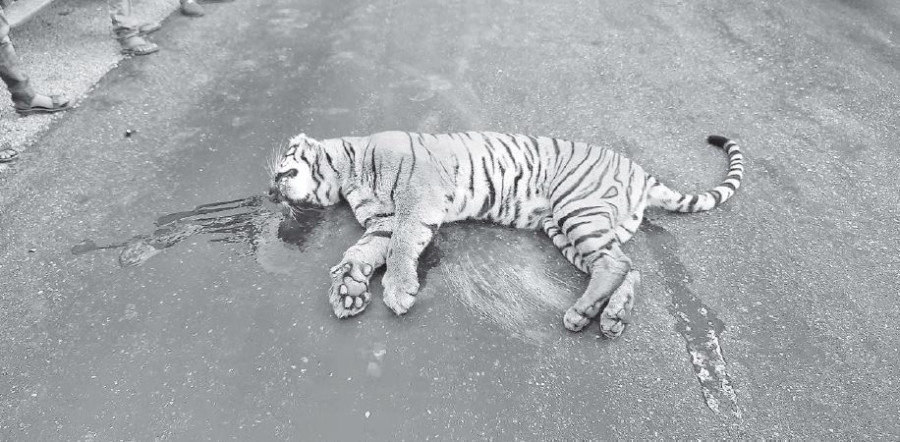Editorial
Reducing roadkill
All concerned must follow stringent measures to mitigate wildlife mortality due to traffic accidents.
On Saturday morning, a speeding car killed a female tiger, agedaround 10 years, in the Parsa National Park on the Pathlaiya Hetauda section of the East-West highway. A day earlier, onFriday, a 50-year-old woman who was pillion riding a motorcycle was attacked by a tiger in the Bardiya National Park sectionof the East-West highway. The woman went missing after thetiger pulled her from the motorcycle, and was found near theattack site the following day. The woman’s son has told themedia that the tiger had attacked the mother-son duo when hewas riding the motorcycle at a slow speed.
These two incidents seem to present a dilemma: Whether toride fast or slow down in the jungle where wild animals, including the big cat, are a regular presence? There may not be animmediate answer to this question. A more pressing concernis: How do we mitigate the conflict between wild animals andhuman beings on roads, highways, or human settlements? Thekilling of the tiger by the speeding car, and the killing of thewoman by the man-eating tiger, are, thus, not isolated eventsbut represent a pattern of human-wildlife conflict in Nepal, asin much of the world, that leads to the loss of life and limbamong both humans and animals.
As Nepal prepares to double the tiger population by the stipulated deadline of 2022, the natural habitat of the big cat isnarrowing. This means that the carnivores are more likely tobe seen on roads and highways in the days to come, and hencethe risk of them being killed. However, tigers are not the onlyanimals that are at risk of roadkill. As the Post reported onSunday, the Banke National Park has seen 72 cases of roadkillin the fiscal year 2017-18, and 45 cases in 2018-19. Similarly, theBardiya National Park saw 35 cases of roadkill in 2019-20, theParsa National Park saw 11 cases of roadkill in the same fiscalyear.
Traffic movement along the East-West highway affects wildanimals from Parsa National Park, Chitwan National Park,Banke National Park, Bardiya National Park, and ShuklaphantaNational Park, resulting in their untimely deaths. The fact thatthe East-West highway itself traverses five wildlife conservation areas in the Tarai region shows how the conflict is notgoing to end anytime soon unless stringent mitigation measures are followed. The construction of roads and highways,especially within dense forests, often affect the survival of wildanimals. Roads and traffic hamper the movement of wild animals through the natural landscape in search of food, shelter,mating, and nesting, among others. Transportation agenciesand other stakeholders, including wildlife reserves, must identify roadkill hotspots and safeguard them.
Research has shown that 194 million birds and 29 millionmammals are killed each year on European roads. SeveralEuropean countries, including the Netherlands andSwitzerland, have come up with wildlife fences and passagesthat help reduce the number of roadkill to some extent.Fencing is especially found to be an effective way to reduceroadkill. Nepal must stringently adopt new policies on savingwildlife from becoming roadkill, including adopting stringentrules on the speed limit. It should begin with informing peopleabout the need to help protect the lives of wild animals whiledriving roads and highways that traverse the natural habitat ofthe animals.




 16.12°C Kathmandu
16.12°C Kathmandu














